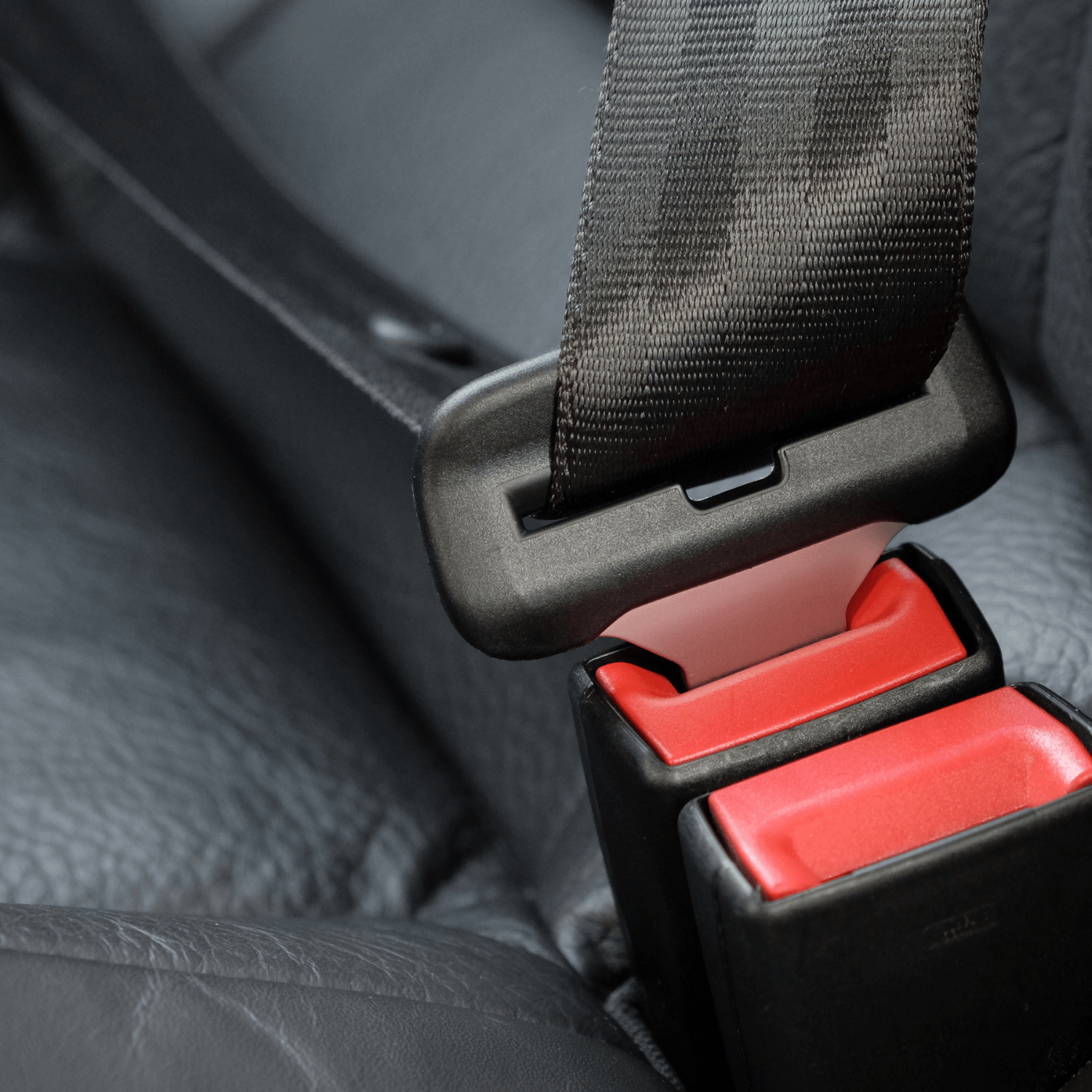
When you think of safety features in a vehicle, seatbelts are likely the first thing that comes to mind. Rightfully so — seatbelts have saved hundreds of thousands of lives since their introduction. But while they’re essential for keeping you restrained during a car crash, they can also cause injuries of their own. These “seatbelt injuries” may range from minor bruising to serious internal trauma that requires immediate medical attention.
At My Super Lawyer, we believe that protecting your rights starts with understanding your injuries. This guide will walk you through the most common types of seatbelt injuries that occur after a car crash, how to recognize them, and why seeking legal help might be the smartest step you take toward getting the compensation you deserve.
How Seatbelt Injuries Happen in a Crash
Seatbelts are designed to spread the force of a collision across the strongest parts of your body — typically the chest, shoulders, and pelvis. In doing so, they prevent you from being ejected from the vehicle or slamming into the steering wheel or windshield. However, the same force that saves your life can also cause harm.
When a vehicle comes to a sudden stop, your body is still moving forward due to momentum. The seatbelt holds you back, but the pressure it exerts can damage soft tissue, bones, and even internal organs. Factors like seatbelt positioning, the type of collision, and your body type can all play a role in how severe your injuries are.
Common Types of Seatbelt Injuries
1. Chest and Rib Injuries
One of the most common areas affected by seatbelts is the chest. During a high-impact crash, the seatbelt can exert enough force on your sternum and ribcage to cause:
- Bruising and Contusions: These are often the first visible signs of seatbelt trauma. The skin may appear red, swollen, and tender to the touch.
- Fractured Ribs: The pressure from the belt can crack or break ribs, especially in older adults or those with brittle bones.
- Sternal Fractures: Though less common, fractures to the sternum (the flat bone in the center of your chest) can be serious and are often mistaken for heart problems.
Pain in the chest area after an accident should never be ignored, especially if it’s accompanied by shortness of breath or dizziness.
2. Abdominal Injuries
Lap belts that sit too high on the abdomen can cause significant internal injuries during a crash. These may include:
- Soft Tissue Damage: Bruising or tearing of the abdominal muscles.
- Organ Damage: The liver, spleen, and intestines are particularly vulnerable and may be punctured or ruptured.
- Internal Bleeding: This is a life-threatening emergency. Symptoms might include a swollen or tender stomach, dizziness, or fainting.
Children and smaller adults are particularly at risk for abdominal seatbelt injuries if the belt isn’t properly adjusted.
3. Neck and Shoulder Injuries
The shoulder strap of a seatbelt can cause injuries to the neck and collarbone. These may include:
- Whiplash: The sudden back-and-forth motion of your head can strain the neck muscles and ligaments, even if you’re wearing a seatbelt.
- Clavicle Fractures: The collarbone can fracture under pressure, especially in side-impact or front-end crashes.
- Nerve Damage: Compression of nerves in the shoulder and neck region can lead to tingling, numbness, or weakness in the arms and hands.
Always get checked by a medical professional if you experience stiffness, pain, or loss of mobility in the neck or shoulders after a crash.
4. Spinal Injuries
Seatbelts are not directly responsible for spinal injuries, but improper use — such as wearing the shoulder strap under the arm — can increase the risk of spinal trauma. Types of spinal injuries include:
- Compression Fractures: These occur when the spine is compressed rapidly, leading to small breaks in the vertebrae.
- Herniated Discs: The sudden impact of a crash can cause the soft tissue between vertebrae to bulge or rupture, leading to chronic pain or nerve issues.
- Lumbar Strain: Tight lap belts can strain the lower back muscles and ligaments, especially in rear-end collisions.
Back pain should never be dismissed. Prompt evaluation can help prevent long-term complications.
5. “Seatbelt Syndrome”
A term coined by medical professionals, “seatbelt syndrome” refers to a specific pattern of injuries that includes:
- Abdominal wall bruising
- Internal organ damage
- Spinal fractures
This syndrome is most often seen in high-impact crashes where the lap belt is worn incorrectly or the victim is a child. It’s a red flag for serious internal trauma and requires immediate emergency care.
How to Recognize Seatbelt Injuries
Not all seatbelt injuries are immediately obvious. Adrenaline and shock can mask symptoms for hours or even days after a crash. Look out for:
- Unexplained bruising or swelling across the chest, abdomen, or neck
- Difficulty breathing or chest tightness
- Nausea or abdominal pain
- Tingling or numbness in the arms or legs
- Back or neck stiffness
If you experience any of these symptoms after a crash, seek medical attention right away — and make sure to document your injuries for your legal case.
Why Car Accident Victims with Seatbelt Injuries Need Legal Help
Even though you were wearing your seatbelt and following the law, you may still suffer serious injuries that impact your quality of life. Unfortunately, insurance companies often downplay the severity of seatbelt injuries because they aren’t always visible — and that can make it harder to get the compensation you deserve.
Here’s why partnering with an experienced injury lawyer is critical:
- They understand the unique challenges of seatbelt injury claims
- They can help gather and preserve crucial medical evidence
- They’ll negotiate with insurers who may try to minimize your injuries
They’ll fight for compensation for medical bills, lost wages, and pain and suffering
You Deserve Compensation for your Seatbelt Injuries – My Super Lawyer can Help.
If you or a loved one suffered seatbelt injuries in a car crash, you shouldn’t have to navigate the legal system alone. Finding the right lawyer for your case can make all the difference in the compensation you receive — and that’s where My Super Lawyer comes in.
My Super Lawyer is a trusted platform designed to match you with the perfect injury lawyer for your specific needs. Whether you’re dealing with internal injuries, spinal damage, or chronic pain from seatbelt trauma, My Super Lawyer can connect you with an attorney who knows how to build a strong case.
My Super Lawyer has a 99% success rate and has recovered more than $2 billion for injured clients. The lawyers we work with are highly experienced, aggressive when it counts, and compassionate when it matters most.
At My Super Lawyer, we make it easy to take the first step toward justice. Don’t let the insurance companies dictate what your injury is worth. Let a professional fight for your full and fair compensation.
Get matched with the best injury lawyer for you today. My Super Lawyer is here to help you win. Contact us today for a free case consultation at 866-680-1181.

